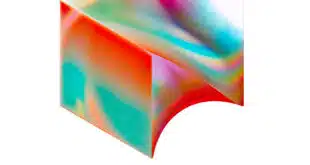Both biller Web sites and bank or so-called consolidator sites are gaining market share, but biller sites are growing faster, according to recent research. Sites maintained by billers will account for 13% of all consumer bill payments this year, up from 11% in 2007. Consolidator sites, meanwhile, will handle 11% of consumer bills in 2008, up just a percentage point from last year. Each of these online bill-payment channels accounted for 7% of bill payments as recently as 2005, according to the research, which was produced by Aite Group LLC, Boston. Ironically, banks themselves may be responsible for the faster growth in the biller-direct channel, says Gwenn Bezard, research director at Aite and author of a report based on the research. “At the beginning of the decade, you had pretty intense marketing by banks [for their bill-payment sites],” he notes. “But that marketing by banks has somewhat slowed.” At the same time, some banks have begun to promote the use of their credit cards for online bill payments. In this way, they earn interchange income at a time when for the most part competition has prevented them from charging fees for payments on their own sites. But these card payments are mostly biller-direct transactions. “Banks themselves are pushing the biller-direct model,” says Bezard. Banks will spend a little more than $900 million in 2008 to support free online bill-payment programs, a cost that will top $1 billion in 2010, estimates Needham, Mass.-based TowerGroup Inc. in research released on Tuesday. The firm says almost 24 million U.S. consumers now actively use online bill payment at bank sites. The costs this activity creates for banks is leading to an emphasis not only on card payments but also, says TowerGroup, to fee-based services such as expedited payments, which are transactions that settle within 24 hours. Does slower growth for their own online bill-payment sites hurt banks? Aite's Bezard says banks are probably breaking even, what with gains to their card programs offsetting any slowdown in bill-payment traffic. “At the end of the day, the bank is probably agnostic,” he says. “You tend to win with both options. As to which is better, it's hard to say.” Meanwhile, in a development that will have implications for bill payments and other transactions on mobile phones, the U.S. is catching up with the U.K. in numbers of consumers accessing the mobile Web. Currently, the U.S. accounts for 18.88% of all user visits to mobile sites, close behind the U.K. at 19.35%, according to statistics released on Tuesday by Bango, a U.K.-based provider of mobile Web technology. Bango predicts the U.S. will soon displace the U.K. as the number-one source of mobile-Web logons. “The USA share of the browsing market has grown as an increasing number of phones come with bigger screens and service contracts that include unlimited Internet access,” said Adam Kerr, vice president of Bango North America, in a statement. “We fully expect the U.S. will overtake the U.K. in this ranking as early as this month. We predicted 2008 would be a pivotal year for the mobile Web in the U.S., and our data [are] backing that up.” That should be good news for merchants and billers hoping to find new customers on the mobile Web. Increasingly, transaction processors are introducing services that allow consumers to conduct purchases at sites they visit on their handsets. Both PayPal Inc. and Google Inc.'s Google Checkout last year introduced services for Wireless Application Protocol (WAP) sites, or sites that have been tailored for the mobile Internet.
Check Also
Consumers Plan to Use Tax Refunds To Pay Down Debt, ACI Finds
Paying down debt is one of the top ways consumers intend to spend their tax …





